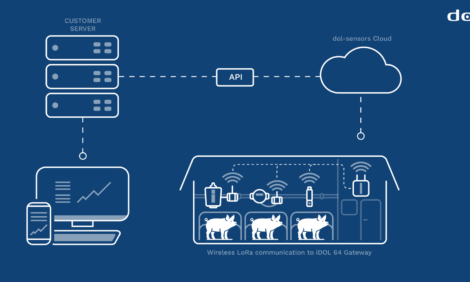



Controlling PMWS on the farm - An update
By Mike Muirhead, ThePigSite.com Consultant - Although there is much debate surrounding the cause of PMWS, in the UK most Veterinarians consider PMWS to be a totally new infectious disease. The reasoning behind this stems from the nature and speed of disease spread over the last 3 years, in which time many farms in the UK have been affected in spite of excellent biosecurity on most of these farms.
<?=getCodeSnippet(46);?>
This article was written just prior to Mike's untimely death.
Source: Mike Muirhead, thePigSite.com - January 2003
Whilst circovirus (PCV2) has been the main agent incriminated it is likely that this is either a new form of the virus or there is a further as yet unidentified agent activating the disease process. As our knowledge and understanding of the disease increases, experience begins to highlight areas of growing importance in controlling PMWS.
For instance, recent field observations indicate two important methods of disease spread appear to be Artificial Insemination (AI) and dung. Knowing this can therefore aid the further development of management practises to help mitigate against the consequences of the disease.
Below is a summary of the key points in treating and controlling PMWS, based on some of the latest UK field experiences.
Controlling PMWS - Key Points
- Change the herd to all-in, all-out but most important adopt a batch farrowing system of every 2, 3 or 4 weeks.
- Synchronies farrowing to control the batch farrowing system. This is especially important in gilts (use a product such as Regumate®, which works well).
- Use a suitable disinfectant to disinfect buildings between batches after cleaning.
- Consider partial depopulation and repopulation at the onset of batch farrowing to control or eliminate other diseases (See: Segregated Disease Control).
- Use separate boots for entry into each housing batch. Also use disinfectant foot dips. This is vital.
- If weaner pens have to be entered disinfect (dip) boots prior to this. This is vital.
- Ensure all piglets have a maximum intake of colostrum. Consider following procedure:
- Change litters (permanently) between 2 sows within 6 - 12 hours after farrowing. This doubles the opportunity for the piglets to intake high levels of PCV2 antibody which it is believed increases the piglets immunity levels. Low antibody intake = disease.
- Raise the intake of antioxidants and flavanoids in the diet from weaning to 35kg to help boost the pig's immunity levels (a nutritional supplement such as ViraMatrix® is ideal).
- Mix incoming gilts with weaner pigs 6 weeks before mating to raise Circovirus antibody levels. Purchase exposed gilts.
Treating PMWS - Key Points
- Ensure the Prompt removal of very early cases to small well maintained hospital pens. Feed supplemented diet high in antioxidants and flavanoids.
- Treat affected pigs with serum. - Combine serum from at least two 90kg pigs that have been exposed to the disease (high circulating circovirus antibody) on that farm. The serum should then be frozen in small amounts for later use. Treat each piglet with 10 - 20ml of thawed serum (24hrs in fridge) given subcutaneously to very early cases as they enter the hospital pens. Repeat in 10 days if necessary.
NOTE: Take advice from your veterinarian regards serum treatment.
Source: Mike Muirhead, thePigSite.com - January 2003






